4-Acetylphenylboronic acid
- CAS NO.:149104-90-5
- Empirical Formula: C8H9BO3
- Molecular Weight: 163.97
- MDL number: MFCD01074667
- EINECS: 629-086-3
- SAFETY DATA SHEET (SDS)
- Update Date: 2025-07-24 18:13:46

What is 4-Acetylphenylboronic acid?
Chemical properties
white to light yellow crystal powder
The Uses of 4-Acetylphenylboronic acid
4-Acetylphenylboronic acid4-Acetylphenylboronic Acid is used in several metal catalyzed cross-coupling reaction studies.
The Uses of 4-Acetylphenylboronic acid
suzuki reaction
The Uses of 4-Acetylphenylboronic acid
Reactant involved in:
- Palladium-catalyzed decarboxylative coupling
- Copper-catalyzed hydroxylation
- Palladium-catalyzed Suzuki-Miyaura cross-coupling
- Cross-coupling with α-bromocarbonyl compounds
- Oxidation catalyzed by Baeyer-Villiger monooxygenases
- 1,5-substitution reactions
General Description
4-Acetylphenylboronic acid is a boronate, belongs to a class of synthetic organic compounds. It reacts rapidly with peroxynitrite (ONOO(-)) to form stable hydroxy derivatives. It undergoes Suzuki coupling with 4-bromotriphenylamine catalyzed by dichlorobis(triphenylphosphine)Pd(II), during the synthesis of dendrimers.
Properties of 4-Acetylphenylboronic acid
| Melting point: | 240-244 °C(lit.) |
| Boiling point: | 354.2±44.0 °C(Predicted) |
| Density | 1.19±0.1 g/cm3(Predicted) |
| storage temp. | Keep in dark place,Sealed in dry,Room Temperature |
| solubility | DMSO (Slightly), Methanol (Slightly) |
| form | Crystalline Powder |
| pka | 7.58±0.10(Predicted) |
| color | Pale yellow to yellow |
| Water Solubility | 25 g/L |
| BRN | 7869162 |
| CAS DataBase Reference | 149104-90-5(CAS DataBase Reference) |
Safety information for 4-Acetylphenylboronic acid
| Signal word | Warning |
| Pictogram(s) |
 Exclamation Mark Irritant GHS07 |
| GHS Hazard Statements |
H315:Skin corrosion/irritation H319:Serious eye damage/eye irritation H335:Specific target organ toxicity, single exposure;Respiratory tract irritation |
| Precautionary Statement Codes |
P261:Avoid breathing dust/fume/gas/mist/vapours/spray. P264:Wash hands thoroughly after handling. P264:Wash skin thouroughly after handling. P271:Use only outdoors or in a well-ventilated area. P280:Wear protective gloves/protective clothing/eye protection/face protection. P302+P352:IF ON SKIN: wash with plenty of soap and water. P305+P351+P338:IF IN EYES: Rinse cautiously with water for several minutes. Remove contact lenses, if present and easy to do. Continuerinsing. |
Computed Descriptors for 4-Acetylphenylboronic acid
4-Acetylphenylboronic acid manufacturer
JSK Chemicals
3Y
Phone:+91-9879767984
Whatsapp: +91-9879767970
product: 149104-90-5 4-Acetylphenylboronic acid, 95% 99%
ASM Organics
Andhra Pradesh
Phone:91-9866122393
Whatsapp: 91-9866122393
product: 4-Acetylphenylboronic acid
New Products
4,4-Difluoropiperidine hydrochloride tert-butyl 9-methoxy-3-azaspiro[5.5]undecane-3-carboxylate Indole Methyl Resin N-Isopropylurea N,N-Dicyclohexylcarbodiimide(DCC) MELDRUMS ACID 5-METHYLISOXAZOLE-4-CARBOXYLIC ACID Magnessium Bis glycinate Zinc ascorbate 1-bromo-2-butyne 2-acetamidophenol 9(10H)-anthracenone Erythrosin B, 4-Piperidinopiperidine 2-((4-morpholinophenylamino) (methylthio) methylene) malononitrile 2,4-dihydroxybenzaldehyde 3-(4-morpholinophenylamino)-5-amino-1H-pyrazole-4-carbonitrile Methyl 2-methylquinoline-6-carboxylate 2,6-dichloro-4-nitropyridine 4-Bromo-2-chlorobenzonitrile 2-(benzylamino)acetic acid hydrochloride 4-(tert-Butoxycarbonylamino)but- 2-ynoic acid 3,4-dihydro-2H-benzo[b][1,4]dioxepine 1-Phenyl-1-cycloprppanecarboxylicacidRelated products of tetrahydrofuran

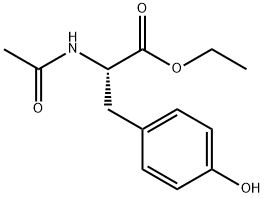

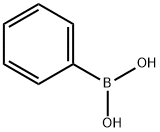
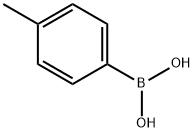

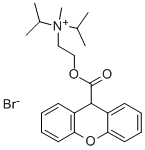
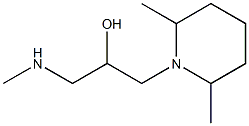
You may like
-
 149104-90-5 4-Acetylphenylboronic acid 99%View Details
149104-90-5 4-Acetylphenylboronic acid 99%View Details
149104-90-5 -
 149104-90-5 4-Acetylphenylboronic acid, 95% 99%View Details
149104-90-5 4-Acetylphenylboronic acid, 95% 99%View Details
149104-90-5 -
 4-Acetylphenylboronic Acid (contains varying amounts of Anhydride) CAS 149104-90-5View Details
4-Acetylphenylboronic Acid (contains varying amounts of Anhydride) CAS 149104-90-5View Details
149104-90-5 -
 4-Acetylphenylboronic acid CAS 149104-90-5View Details
4-Acetylphenylboronic acid CAS 149104-90-5View Details
149104-90-5 -
 4-Acetylphenylboronic Acid 95%, Packaging Type: BottleView Details
4-Acetylphenylboronic Acid 95%, Packaging Type: BottleView Details
149104-90-5 -
 4-Acetylphenylboronic Acid Cas : 149104-90-5, LiquidView Details
4-Acetylphenylboronic Acid Cas : 149104-90-5, LiquidView Details
149104-90-5 -
 20677-73-0 (2,2-diethoxyethyl)methylamine 98%View Details
20677-73-0 (2,2-diethoxyethyl)methylamine 98%View Details
20677-73-0 -
 3-(4-(hydroxyamino)-1-oxoisoindolin-2-yl)piperidine-2,6-dione 98%View Details
3-(4-(hydroxyamino)-1-oxoisoindolin-2-yl)piperidine-2,6-dione 98%View Details
Statement: All products displayed on this website are only used for non medical purposes such as industrial applications or scientific research, and cannot be used for clinical diagnosis or treatment of humans or animals. They are not medicinal or edible.
